Sibylle Ruppert – Dancing in Darkness
Kunsthalle Gießen
by Pina Bendfeld
Note:
The article contains descriptions and depictions of violence and sexually explicit acts.
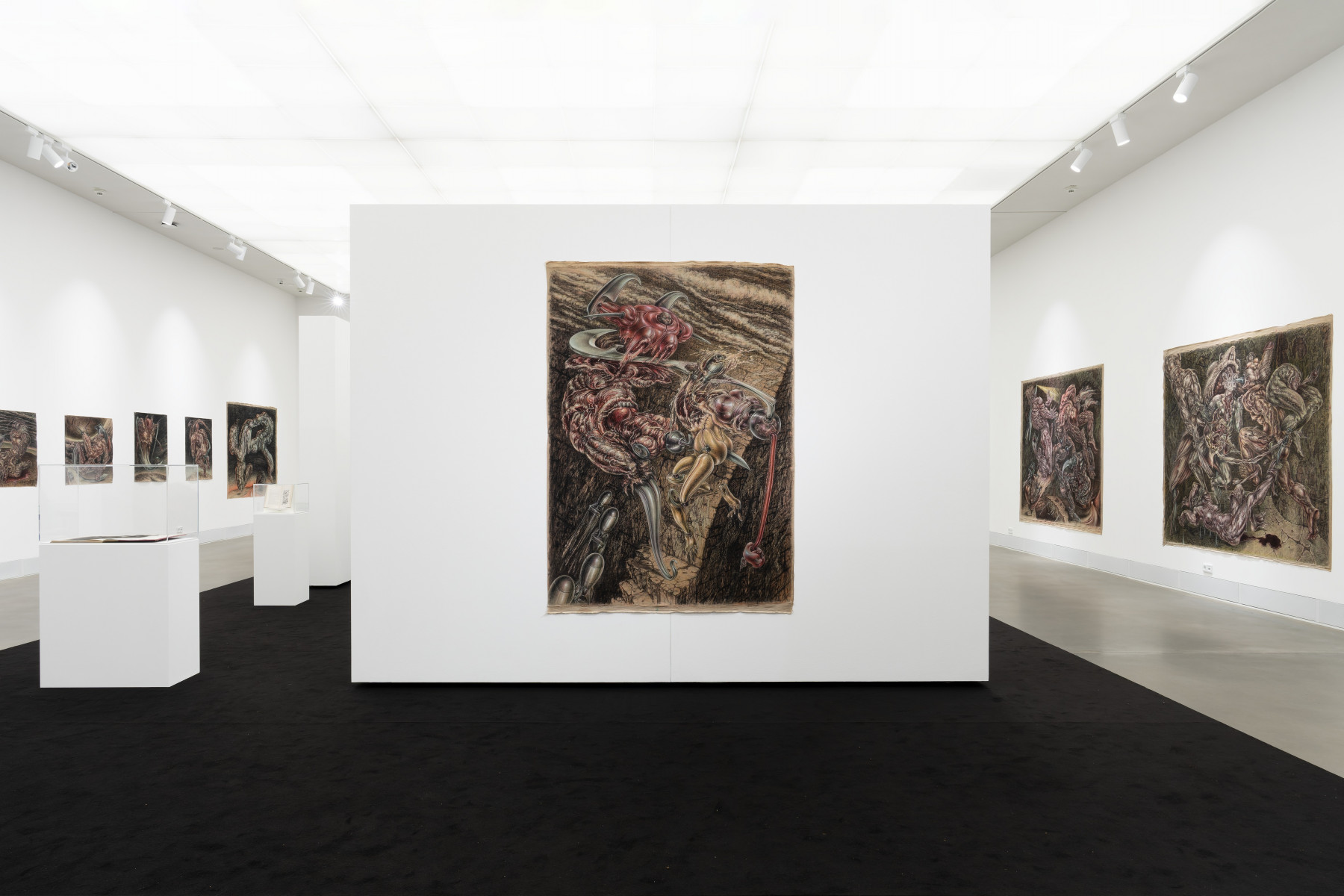
Sibylle Ruppert, installationview "Dancing in Darkness", Kunsthalle Gießen, 2023. Photo: Rolf K. Wegst.
Long forgotten and shrouded in darkness, Sibylle Ruppert's (*1942, † 2011) gruesome works of masterful precision are now regaining attention. Her body of work, equally disturbing as it is fascinating, is the subject of a comprehensive institutional exhibition titled “Dancing in Darkness”. It brings together two contrasting locations, and hereby, two worlds: the Kunsthalle Gießen, architecturally bound to the city hall and its administrative offices, and the sacral church and cultural centre of St. Thomas Morus. This ambivalence is reflected not only in Ruppert's work, but also throughout her tumultuous life.
The extraordinary show presents for the first time remarkable works from a private collection in Gießen, providing a glimpse into the vast amount of archival material — much of which is yet to be reviewed and processed. This comprises psychiatric records, self portraits, diaries, letters and notes that reveal the artist's inner life and begin to unveil the enigma surrounding both her work and her person.
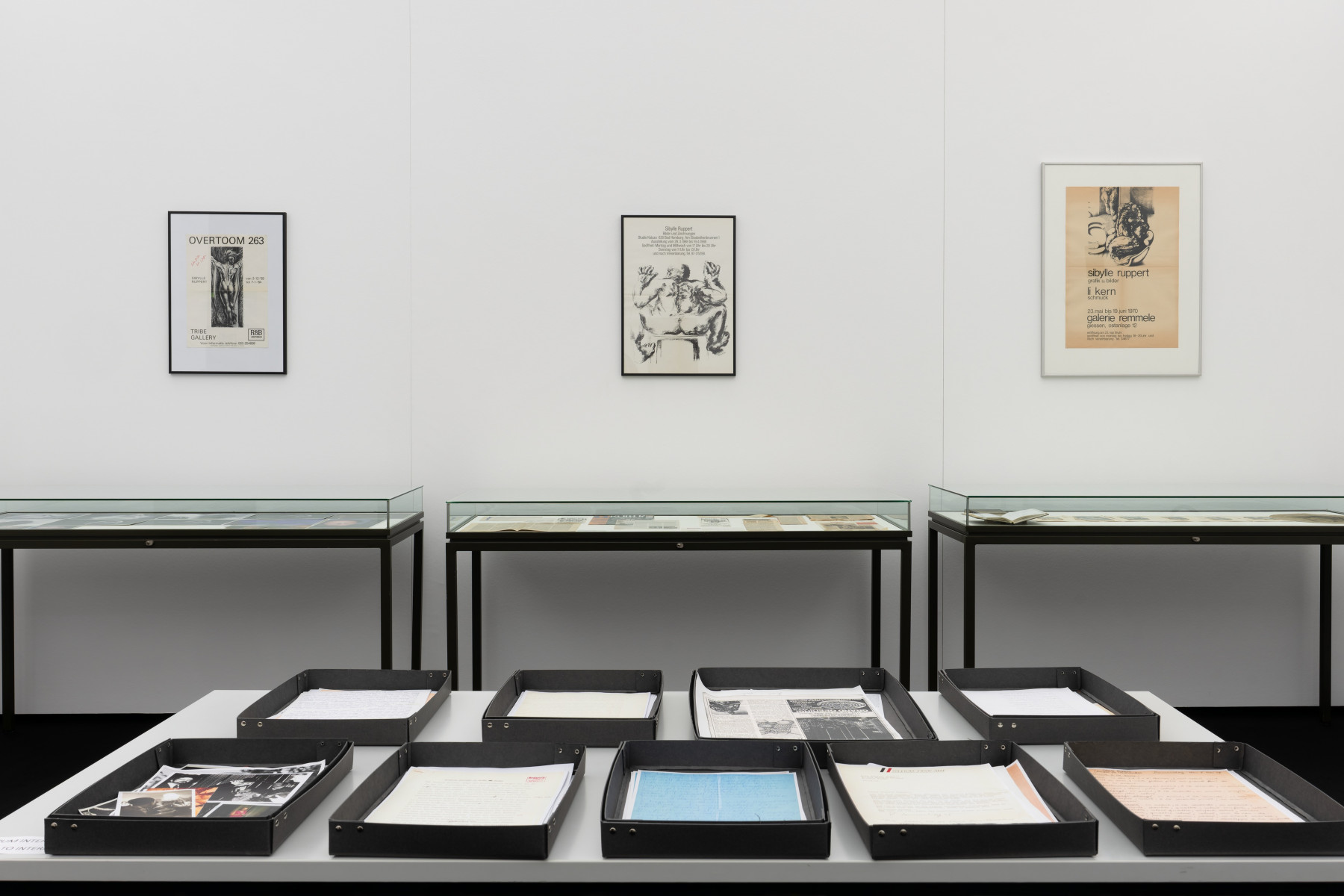
Sibylle Ruppert, installationview "Dancing in Darkness", Kunsthalle Gießen, 2023. Photo: Rolf K. Wegst.
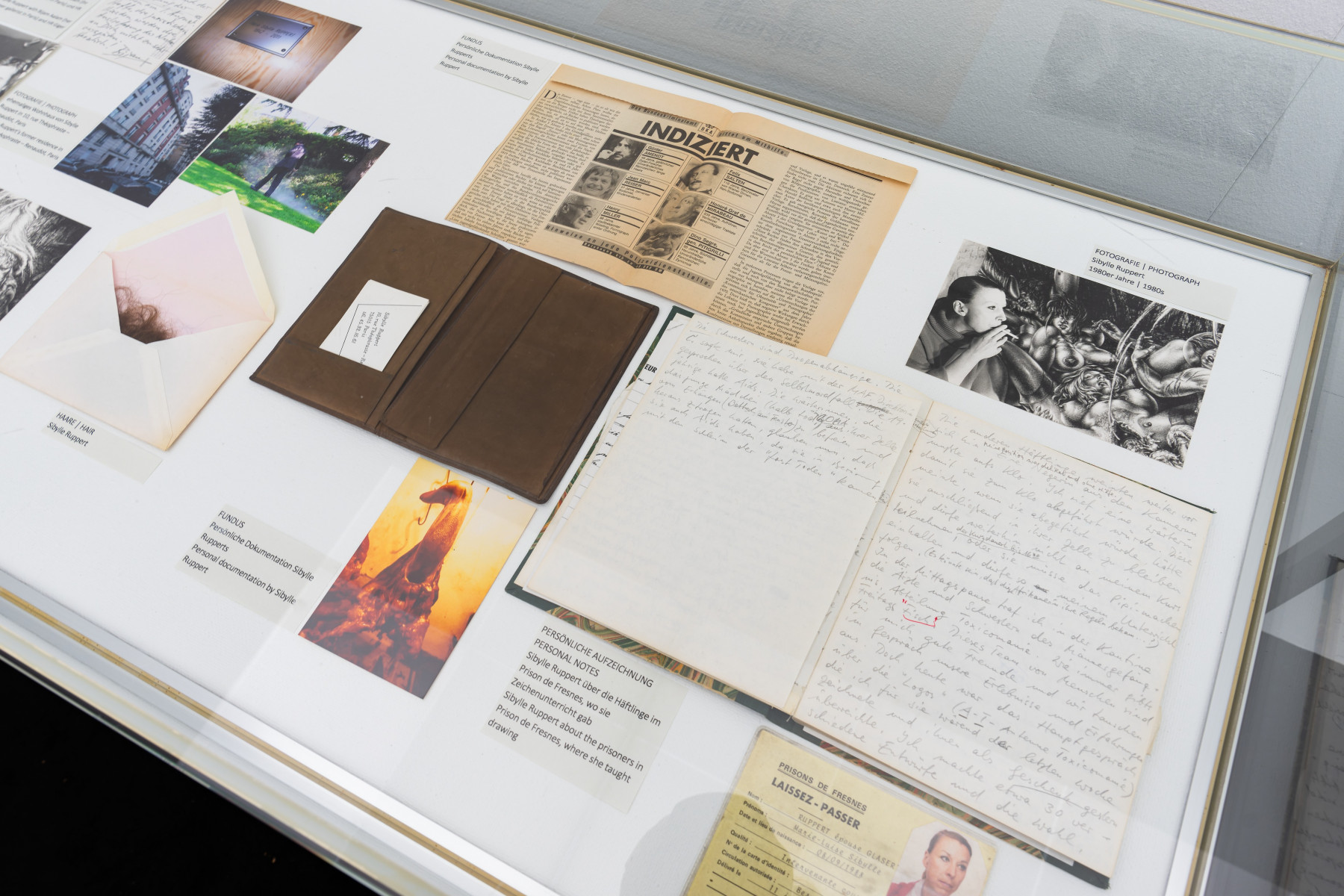
Sibylle Ruppert, installationview "Dancing in Darkness", Kunsthalle Gießen, 2023. Photo: Rolf K. Wegst.
Upon entering the large hall of the Kunsthalle Gießen, visitors immediately find themselves confronted with and immersed in the merciless brutality imposed on the large-format canvases. There is no escape from this nightmare.
Within the exhibition, the entire spectrum of cruelty is meticulously laid out: bodies contort in pain, faces are distorted by torment. Each work is a violent spectacle that aggressively unfolds across the pictures, involving acts of piercing and tearing flesh, muscles and tendons. Bodily fluids splatter across the canvas, blood flows from severed heads or speared torsos, and saliva and other secretions leak from various orifices. Limbs are ruthlessly crushed in cogwheels or forcibly joined, severed or penetrated with other machines.
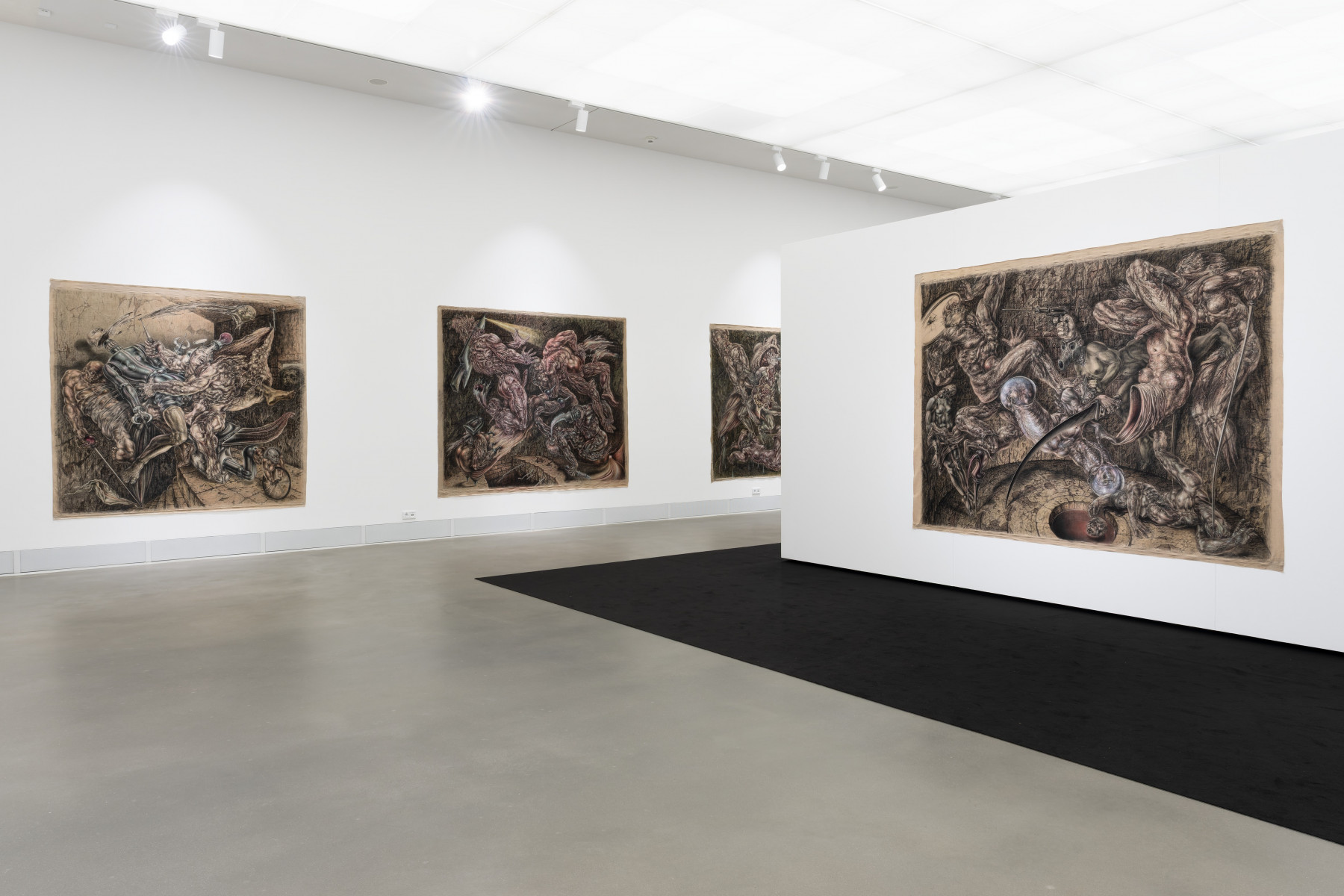
Sibylle Ruppert, installationview "Dancing in Darkness", Kunsthalle Gießen, 2023. Photo: Rolf K. Wegst.
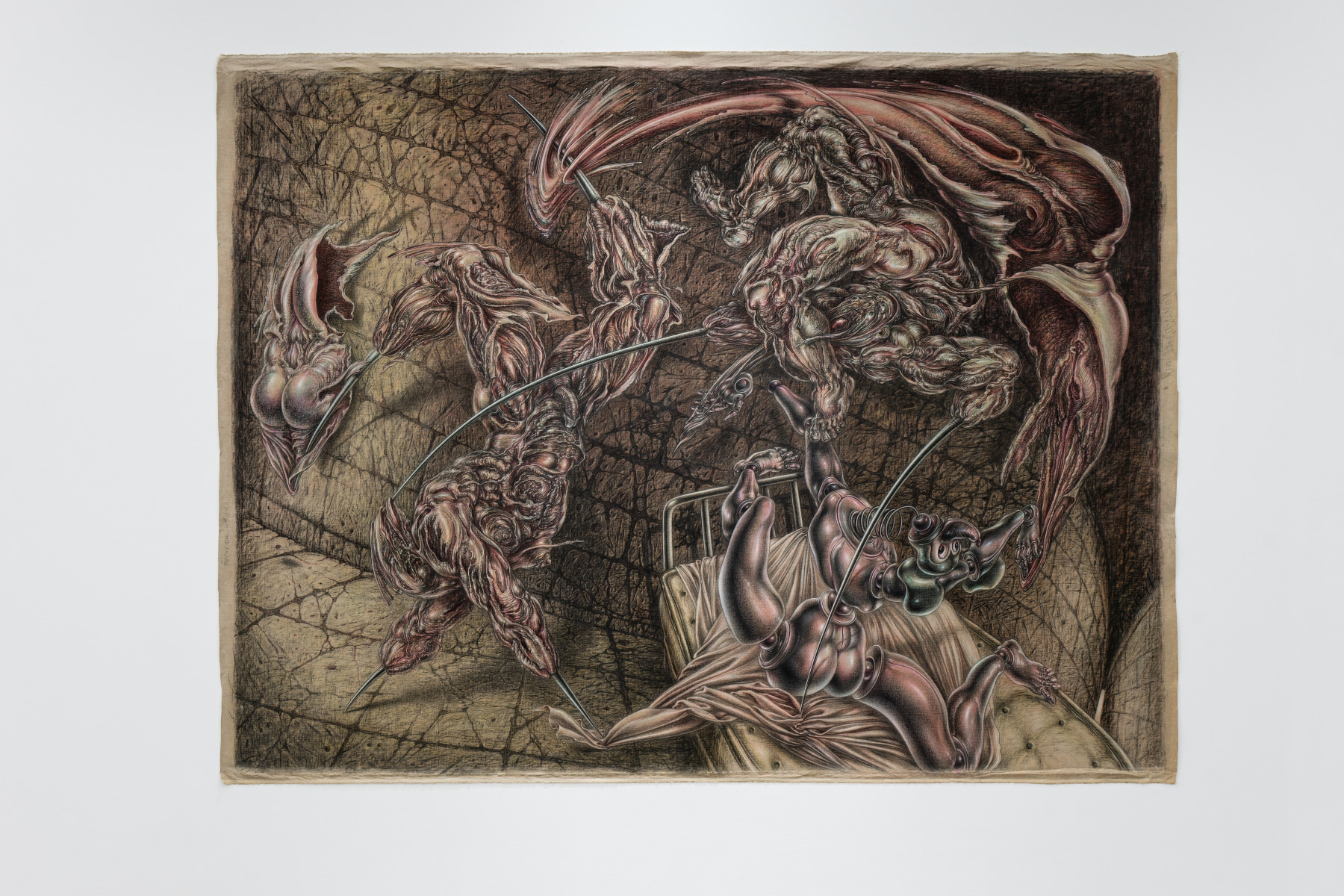
Sibylle Ruppert, Der Tunnel, 1982/83, installationview "Dancing in Darkness", Kunsthalle Gießen, 2023. Photo: Rolf K. Wegst.
The boundaries of the body blur and become obsolete; the inside is turned out, muscle strands contort and condense into obscure figures that grow into or emerge from metallic machines. This mutation not only provokes a dissolution of the distinction between human, animal and machine but also erases the binary of subject and object. It is impossible to identify the perpetrator or the victim of the massacre – all beings embody both potentials.
Despite the explicit depiction of bare breasts, swollen, erect phalluses and everything from obscene sexual acts to violent rapes, these intertwined beings elude gender ascription. Temporal and spatial boundaries dissolve as Ruppert's works transcend any particular time or physical location. Sci-fi elements such as an astronaut's helmet or barren scenes reminiscent of a moon or Mars landscape are of little significance; it is the body and the spectrum of its violent actions that take the central stage.
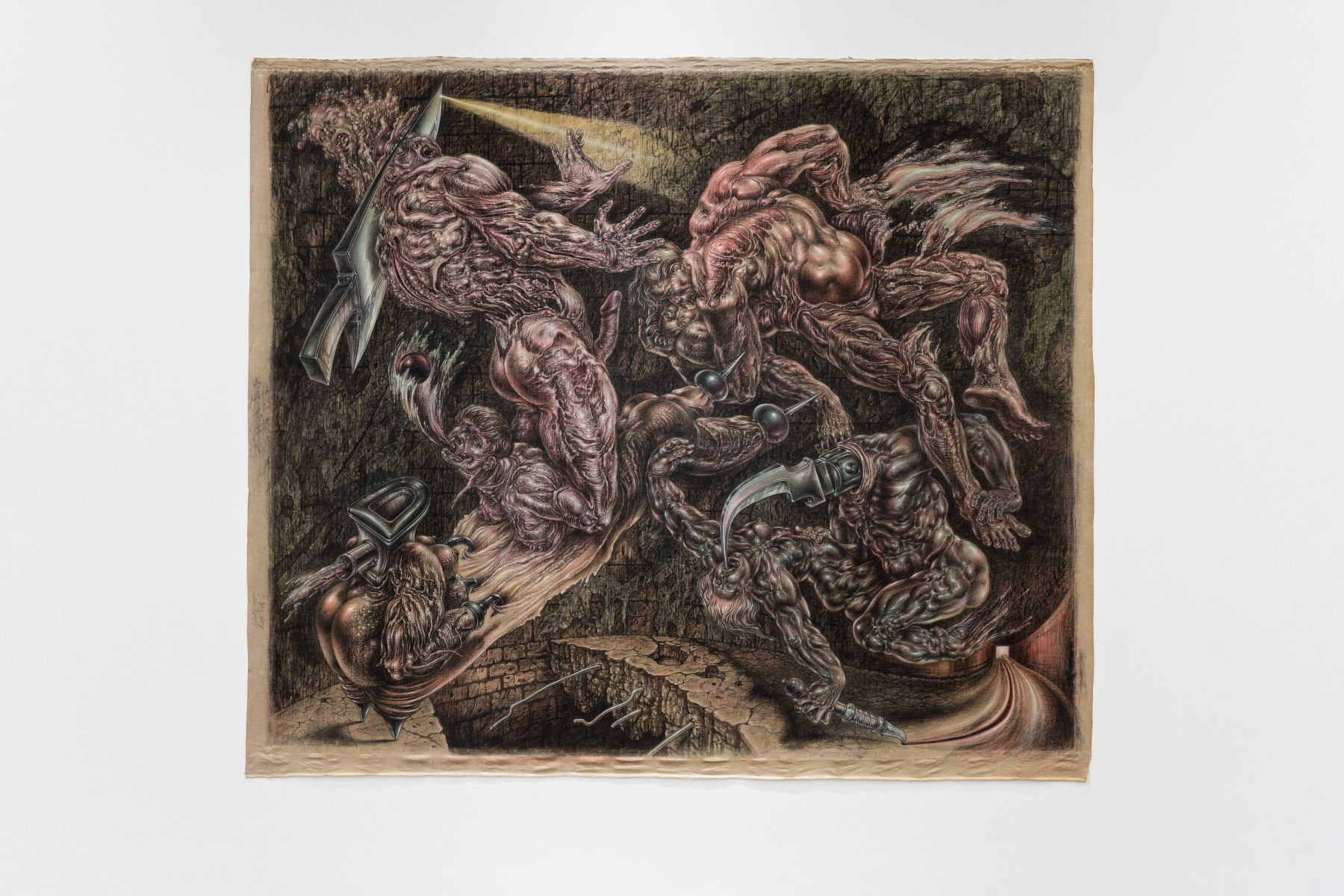
Sibylle Ruppert, unknown title, 1982, installationview "Dancing in Darkness", Kunsthalle Gießen, 2023. Photo: Rolf K. Wegst.
Ruppert’s enduring fascination with the equally vulnerable and violent body is a recurring motif in her work. The artist meticulously studied human anatomy and even attended an open-heart surgery. Influenced by dark prose, the surrealist writings of Georges Bataille and documentaries about concentration camps in World War II, she tirelessly delves into the darkest depths of the human psyche. In this context, the violent and pornographic works of Lautréamont and the Marquis de Sade also played a crucial role. Editions of these, featuring illustrations by the Frankfurt artist, are on display in Gießen.
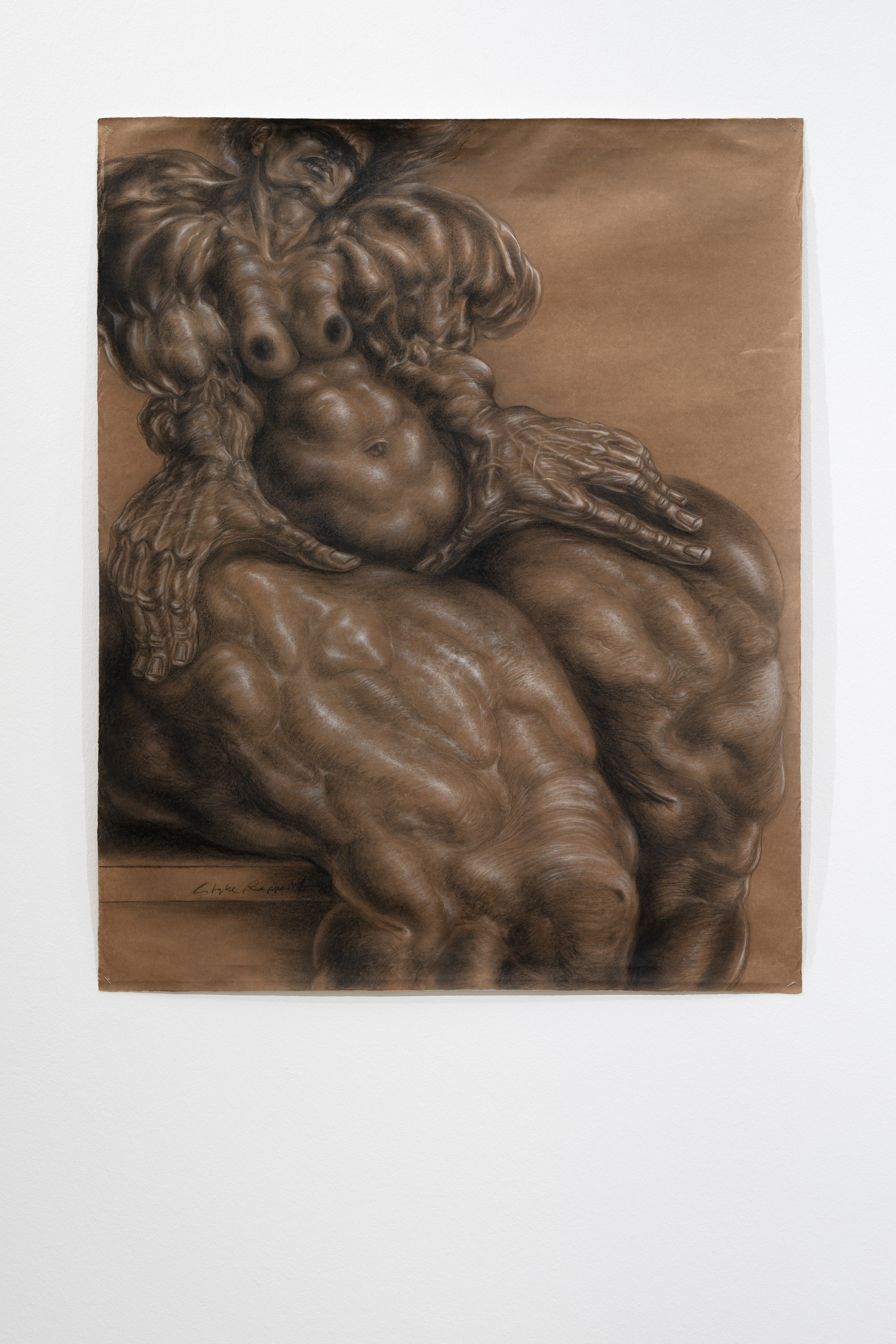
Sibylle Ruppert, unknown title, 1990, installationview "Dancing in Darkness", Kunsthalle Gießen, 2023. Photo: Rolf K. Wegst.
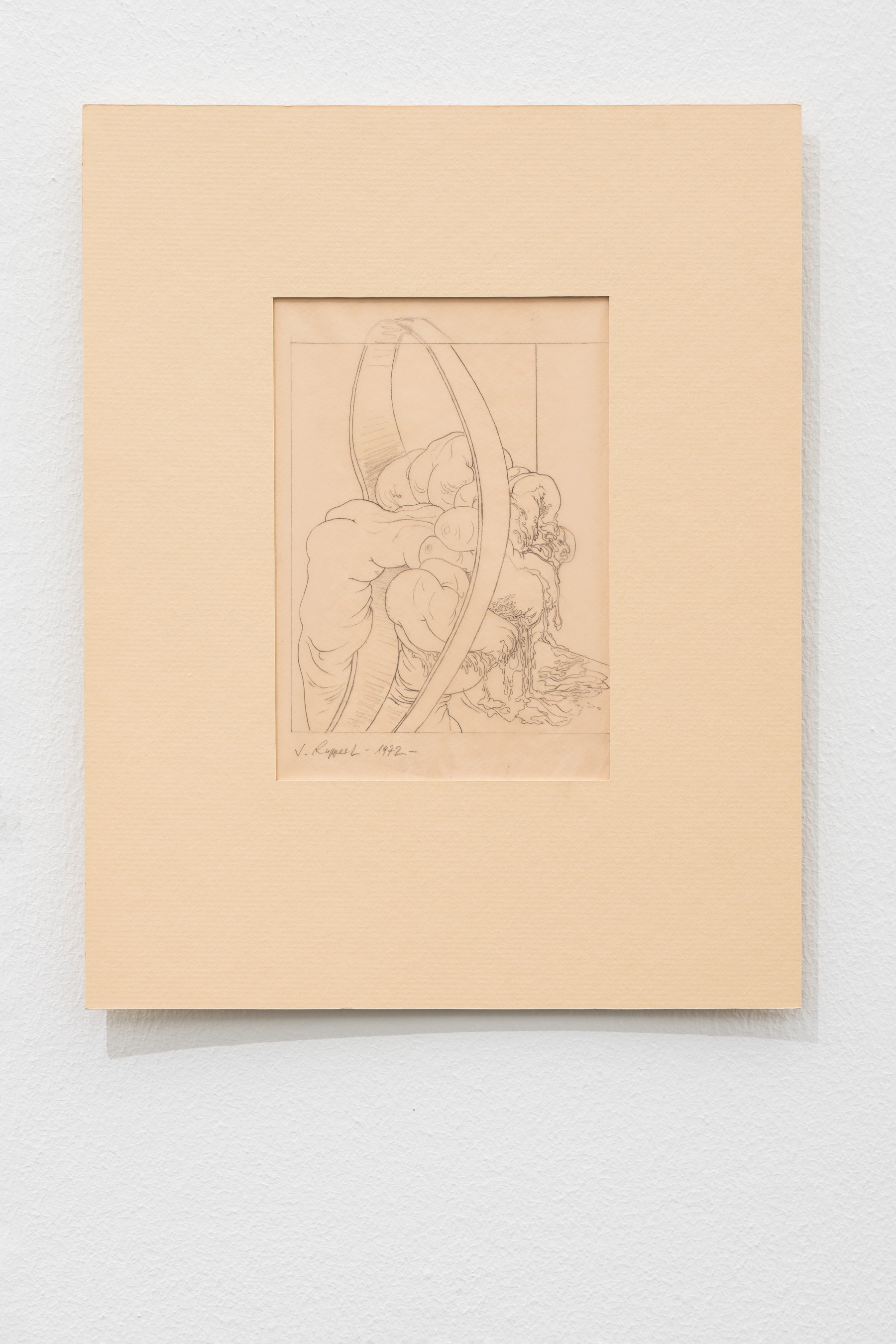
Sibylle Ruppert, illustrations for Die Philosophie im Boudoir by Marquis de Sade, 1972, installationview "Dancing in Darkness", Kunsthalle Gießen, 2023. Photo: Rolf K. Wegst.
Sibylle Ruppert’s continuous confrontation with the ugly faces of violence perhaps indicates a way of coping with traumatic experiences. Recreating and externalizing the demon in her art may be a way to conquer the fear of encountering it, to regain control. For the observer, on the other hand, these explicit depictions of violence can come across as disturbing, frightening and emotionally unsettling. The contemplation of the artworks may lead to irritation, questioning whether one is allowed to feel aroused in the face of such massive perversion. "Dancing in Darkness" prompts us to explore parts of the subconscious that are often masked behind the guise of a coping strategy or a facade. The ruthless portrayal of unrelenting brutality and raw carnality reveals the hidden nightmare, the secret desires, traumas or violent fantasies. The very foundation of repression begins to crumble; it collapses, unveiling the frightened psyche — equally vicious and intimate.
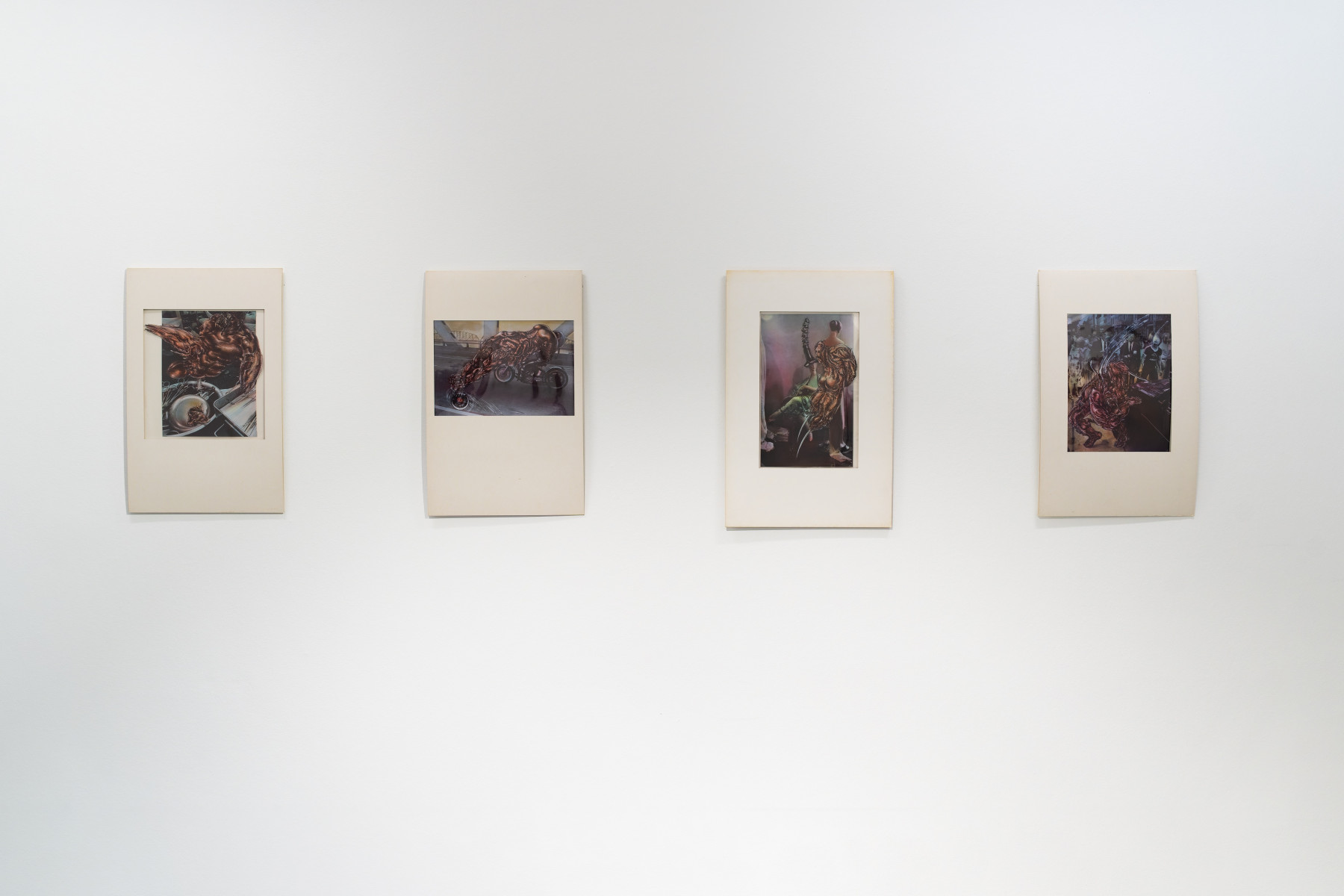
Sibylle Ruppert, installationview "Dancing in Darkness", Kunsthalle Gießen, 2023. Photo: Rolf K. Wegst.
Confronted with these explicit visuals in 1968, the Frankfurter Rundschau was appalled by her "outrageous masculine style“. Aside from the usual oppressive undertones aimed at female artists, the remark has a bitter aftertaste, given that women are more likely to be subjected to sexual violence. Why then should the depiction of boundless cruelty be reserved for men? Such critique likely contributed to the declining interest in Ruppert’s work, while male contemporaries like H.R. Giger enjoyed global success. Facing a subsequent decline in sales, Ruppert worked at her father's art school, and later as an art therapist in a psychiatric institution, as well as in prisons and drug rehab centres, all the while pursuing her artistic practice. She passed away secluded in Paris in 2011.
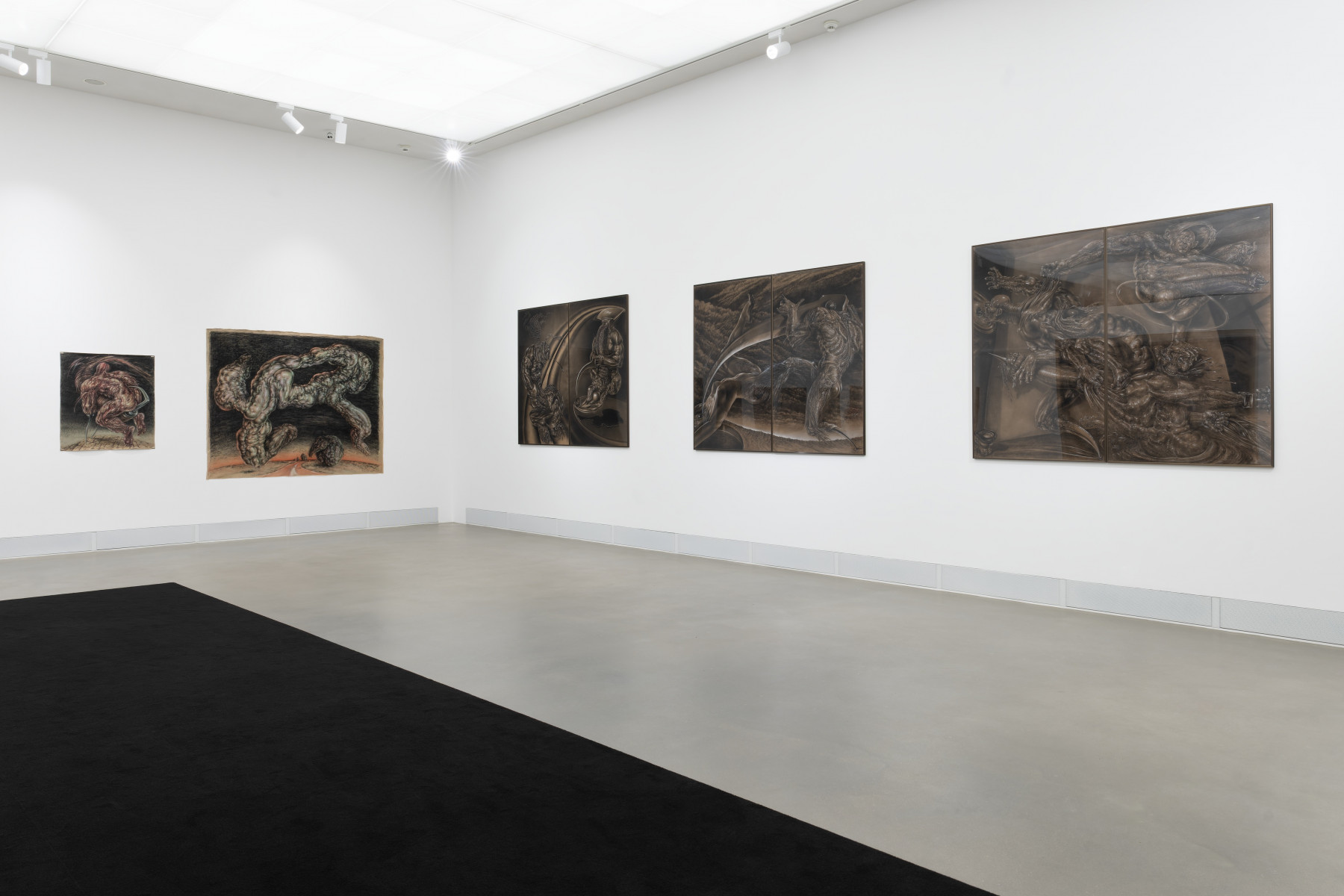
Sibylle Ruppert, installationview "Dancing in Darkness", Kunsthalle Gießen, 2023. Photo: Rolf K. Wegst.
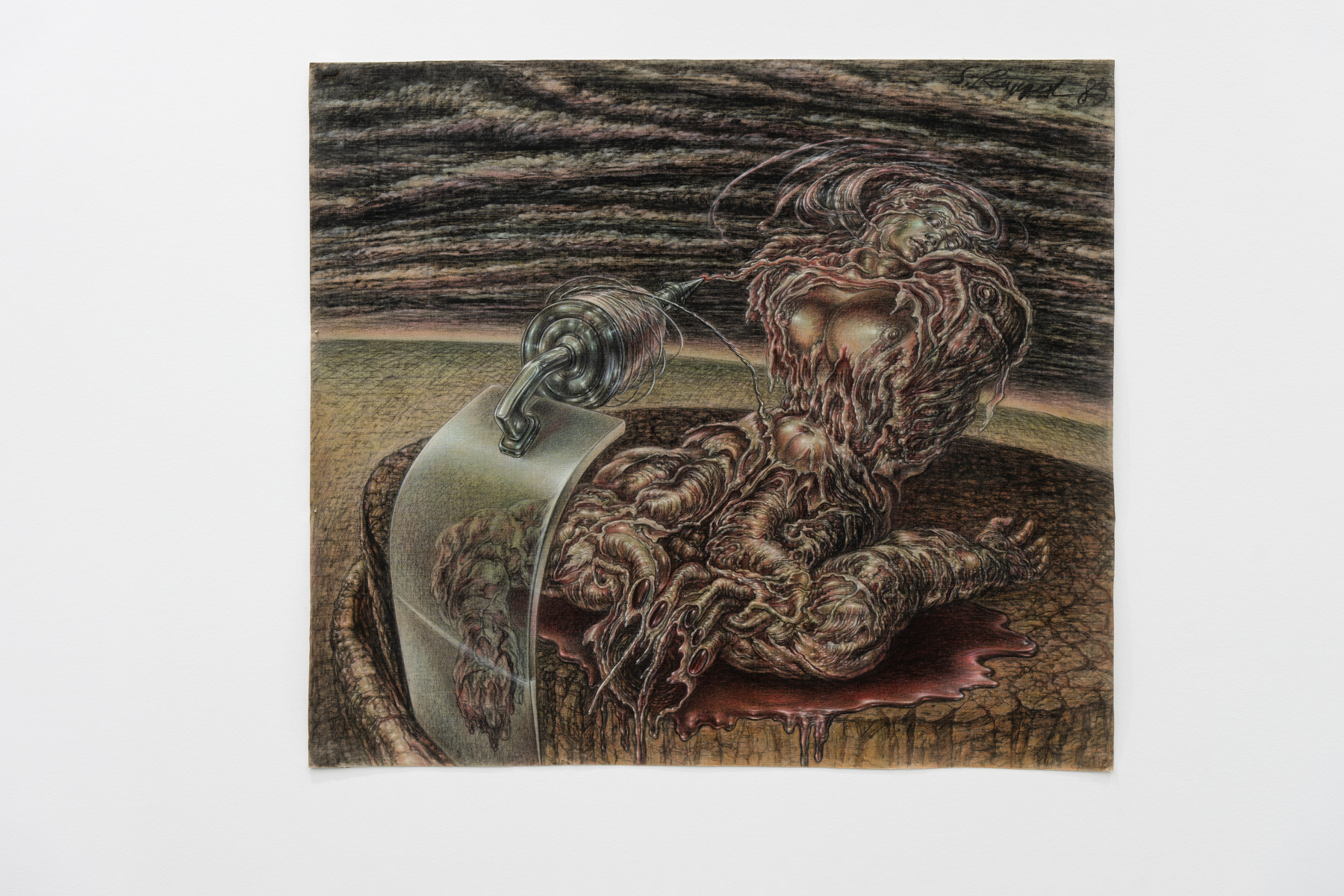
Sibylle Ruppert, unknown title, 1983, installationview "Dancing in Darkness", Kunsthalle Gießen, 2023. Photo: Rolf K. Wegst.
Largely overlooked during her lifetime, Sibylle Ruppert’s work is finally granted the recognition it deserves through “Dancing in Darkness”. The exhibition resembles an inexhaustible archive where every expansive chalk painting and the tiniest notebook entry serve as clues to a painful healing process and the artist's ongoing dialogue with her inner demons. Facing the works as a viewer is not easy. The brutal depictions are deeply unsettling — especially in light of the omnipresence of humanity’s unbearable potential for violence. Perhaps it is the latter that ultimately leaves us speechless: not Sibylle Ruppert's unparalleled, unapologetic scenes of violence, but the existence of an unrelenting and enduring horror from which they originate.
A film produced by Kunsthalle Gießen about Sibylle Ruppert's oeuvre will be released in the first quarter of 2024.
Dancing in Darkness
Sibylle Ruppert
29/07 – 22/10/2023
Curated by Dr. Nadia Ismail and Gesine Borcherdt
Kunsthalle Gießen
Berliner Platz 1
35390 Gießen